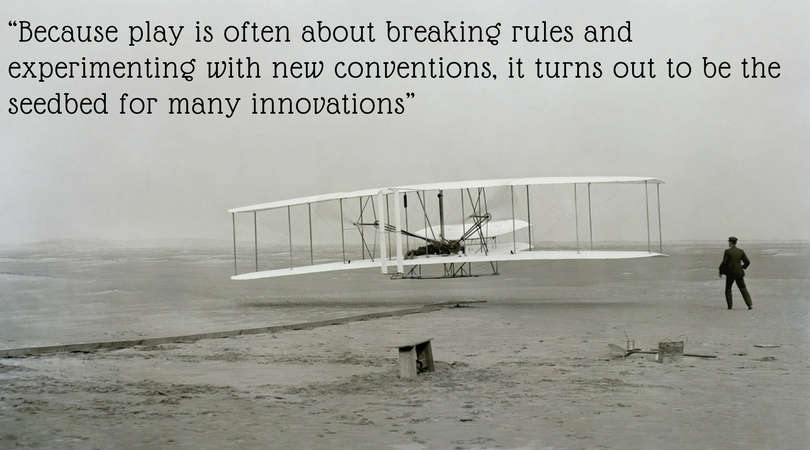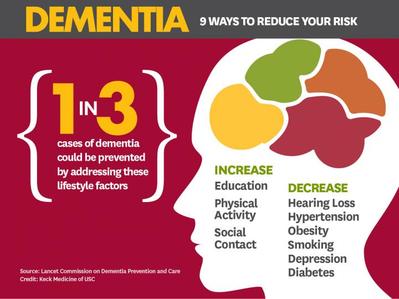|
Our brains are wired to make us cautious about the unknown - to help us look before we leap, for our safety. And we are faced with uncertainty daily: unexpected traffic snarls, changes at work, choosing which candidate to vote for. Research shows that uncertainty can elicit "fear, worry and anxiety, perceptions of vulnerability, and avoidance of decision-making". People have varying levels of uncertainty tolerance and respond to uncertainty in a range of ways, from seeking more information to distancing and denial. A proven way to become more tolerant of uncertainty is to practice in low-stakes situations where the next thing is not yet known, like improv exercises! A 2020 study points out that "each successive moment in improvisation is one of many (perhaps infinite) possibilities; as such, an improv encounter provides direct and repeated experience with social uncertainty." So experiences that hold to the supporting and accepting tenets of improv can help us to develop new associations with the idea of encountering uncertainty. Plus, it's so much fun!
0 Comments
Today, two-thirds of the U.S. population is sheltering at home in order to slow the spread of the SARS-CoV-2 virus, which causes Coronavirus Disease 2019, better know as COVID-19. Responding to this global pandemic has required a tremendous amount of improvisation to solve urgent problems in health care. Every day, people are improvising home work stations, community support, education, entertainment, and social connection. Improvisation does not mean that one is not prepared, rather, it means using what is at hand. I've been scouring the web to find good resources for making face masks to provide some degree of protection from airborne viral bodies. This guide from Masks of Love WNC has patterns and detailed sewing instructions for two types of masks. Here is a pdf with detailed instructions and photos. (This is from another website with prototype before the WNC site was created.) The pdf includes links to research articles and more patterns. Here is another design, the HK mask by Hong Kong chemist Dr. K. Kwong. This mask seems extra secure with ties as well as ear loops. In addition, this mask is designed to easily insert and replace a filter such as paper towel or tissue, which have surprisingly been shown to increase filtering effectiveness. (Here's a link discussing different materials that can be used for masks and filters.) The HK mask page has patterns, detailed instructions, and video showing how to sew this mask, how to tie it and how to wear it.
Unity Point Health in Cedar Rapids has made a pattern and video instructions available here. I don't see a lot of difference from the Masks of Love pattern. It looks like it might come up higher on the cheek. And if you don't have a printer at home, this site has an image on graph paper so you can draw your own pattern. It also has a video and detailed instructions. Note that the addition of a nose wire comes late in the instruction here, but that's an important element. Improvised construction materials include covered elastic ponytail holders for the ear loops, t-shirts and dish towels for the mask fabric. For the nose wire, people are using prong base fasteners, doubled pipe cleaners (not as strong), jewelry or gardening wire. Why masks?
Wishing you the very best as we improvise our way through.  On a route that I travel each week, I usually phone one of my sisters for a chat. However, there's a stretch of about two blocks where there's interference with my cell reception, and I either lose parts of the conversation, or the call drops altogether. When we reconnect, we have to find where we got cut off and try to pick up the thread of the conversation. A similar thing can happen when people are talking face to face. Have you ever been having a conversation where it felt like, instead of listening to you, the person in front of you was waiting for you to finish so they could take their turn speaking? Of course, an interesting conversation will spark ideas and responses, but when we stop listening because we're busy thinking about what we're going to say next, we've dropped the connection. I facilitate a few different improv games that are structured so that people cannot respond until they've heard the last word their partner speaks. It's good listening practice, and a good reminder to make sure you don't drop the call when you're having a discussion. In this article, Francesca Gino of Harvard Business School discusses how improv exercises can improve leadership and team morale and effectiveness: Using Improv to Unite Your Team.  It might be hard to admit to feeling lonely, but research finds that people are increasingly isolated, and that loneliness is harmful to your health. We tend to have busy lives, and time with others is an area that often gets cut back as a result. In a large-scale study, researcher Julianne Holt-Lunstad found that social integration is a stronger contributor to longevity than exercise, or quitting smoking or alcohol. Social integration means face-to-face interactions, even with strangers. Research also shows that in older people, social engagement is related to a higher level of cognitive function. The Global Council on Brain Health makes several recommendations, including:
 In a New York Times article, "How to Build Resilience in Midlife," Dr. Dennis Charney, a resilience researcher, advises that you can increase your own resilience by going outside of your comfort zone. "There is a biology to this. Your stress hormone systems will become less responsive to stress so you can handle stress better." Being positive or optimistic is another key, and this is something that can be developed. In his book Everything's an Offer, Robert Poynton talks about how improvisers on a bare stage must use all ideas--even accidents--to create the seen. When you can frame setbacks as offers to be explored, more possibilities open up. So say hello to a stranger, wear something fun, extend an invitation, and get out of your comfort zone!
 "Senior moment" "Spacing out" "Brain fog" However you may refer to it, forgetfulness happens. Causes can be as simple as dehydration, fatigue, or high blood pressure. Some medications can can cause forgetfulness, as can anxiety or depression. But there is a lot that you can do to keep your synapses firing smoothly.
This is a great article on the link between play and innovation. Play is a place of openness, experimenting and surprising ourselves.
Among the primary interventions identified to ward off dementia are increasing physical activity and social contact, and decreasing depression. An idea that came to me early in my applied improvisation training was that these exercises were like brain-training games, but instead of an individual alone with a screen, they are instead experiencing physical activity, social engagement, and the benefits of laughter. And all three of these elements are key in combating depression. And these are only a few of the benefits of improv! Cool, huh?
I think of Bernard De Koven as the Godfather of Play. I've written earlier about his lifelong dedication to giving people the gift of cooperative, joyful play. In this one-minute video, Bernie makes a simple distinction between game communities and play communities.
|
Archives
March 2020
Categories
All
|







